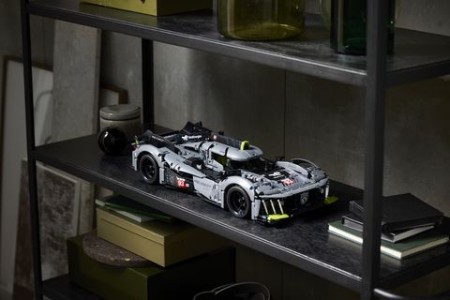Building blocks are a captivating genre of children's toys, encompassing blocks of various sizes and shapes.
These blocks possess the remarkable ability to interlock via slots, grooves, or magnets, allowing young minds to craft an array of diverse structures, buildings, vehicles, and more.
Not only are building blocks a source of entertainment, but they also serve as catalysts for nurturing children's creativity, spatial imagination, hand-eye coordination, and problem-solving prowess.
Building blocks stand as a venerable and beloved educational instrument, propelling the cognitive and intellectual maturation of children. Renowned building block brands include the iconic LEGO and the timeless wooden building blocks, among others.
The benefits of allowing children to engage with building blocks are manifold, holding profound implications for their growth and development:
1. Cultivation of Creativity and Imagination: Building blocks function as a stimulus for children's creativity and imagination, empowering them to ingeniously unite and construct diverse structures, thereby nurturing their creative thinking abilities.
2. Spatial Cognition and Geometric Understanding: The art of assembling building blocks necessitates the consideration of spatial relationships and shapes, thereby aiding children in comprehending fundamental geometric concepts, such as planes and three-dimensional forms.
3. Enhanced Hand-Eye Coordination and Fine Motor Skills: Assembling blocks necessitates refined motor skills, leading to the augmentation of a child's hand-eye coordination and fine motor capabilities.
4. Fostering Problem-Solving Competence: While engrossed in the realm of building blocks, children inevitably encounter constructional challenges. This exposure stimulates their cognitive faculties, as they grapple with how to interlace and construct, ultimately fostering robust problem-solving abilities.
Advertisements
5. Cultivation of Patience and Perseverance: The assembly of intricate building block configurations requires both patience and perseverance, instilling within children the invaluable trait of unwavering determination.
6. Promotion of Cooperation and Social Interaction: Collaborative construction, involving the interlocking of blocks by multiple children, cultivates teamwork, cooperation, and social interaction, nurturing valuable interpersonal skills.
In essence, indulging in the world of building blocks constitutes a constructive and advantageous endeavor for children, serving as a holistic means to nurture cognitive, social, and creative aptitudes.
When embarking on the task of selecting the most suitable building blocks, a prudent consideration of a child's age, interests, developmental stage, and desired educational outcomes is paramount. The following guidelines offer sagacious advice in this regard:
1. Age Suitability and Safety: Commence by ensuring that the chosen building blocks align with the child's age. Age-specific labels provide essential guidance, preventing the inadvertent selection of unsafe toys. Eliminate the risk of small parts that could pose a swallowing or choking hazard.
2. Interest Alignment: Consider the child's interests. Opt for model blocks if the child revels in constructing models, or choose electronic blocks if the child exhibits a fascination with science and electronics. Prioritize blocks that ignite the child's curiosity and inventive spirit.
3. Educational Merit: Delve into the educational value of the blocks. Some sets offer opportunities to delve into basic math, geometry concepts, and other educational objectives. Notably, the LEGO Education series delivers bricks geared explicitly toward educational subjects.
4. Quality and Durability: Bestow preference upon high-quality building blocks, capable of withstanding the rigorous cycle of assembly and disassembly. Reputable brands usually guarantee superior quality.
5. Diversity and Expandability: Opt for a diverse assortment of building blocks, offering myriad play possibilities. The ability to expand the collection over time introduces increased challenges and amusement.
Ultimately, the ideal building blocks should fulfill a child's needs, serving both as a source of entertainment and as a vehicle for their growth and educational development.



